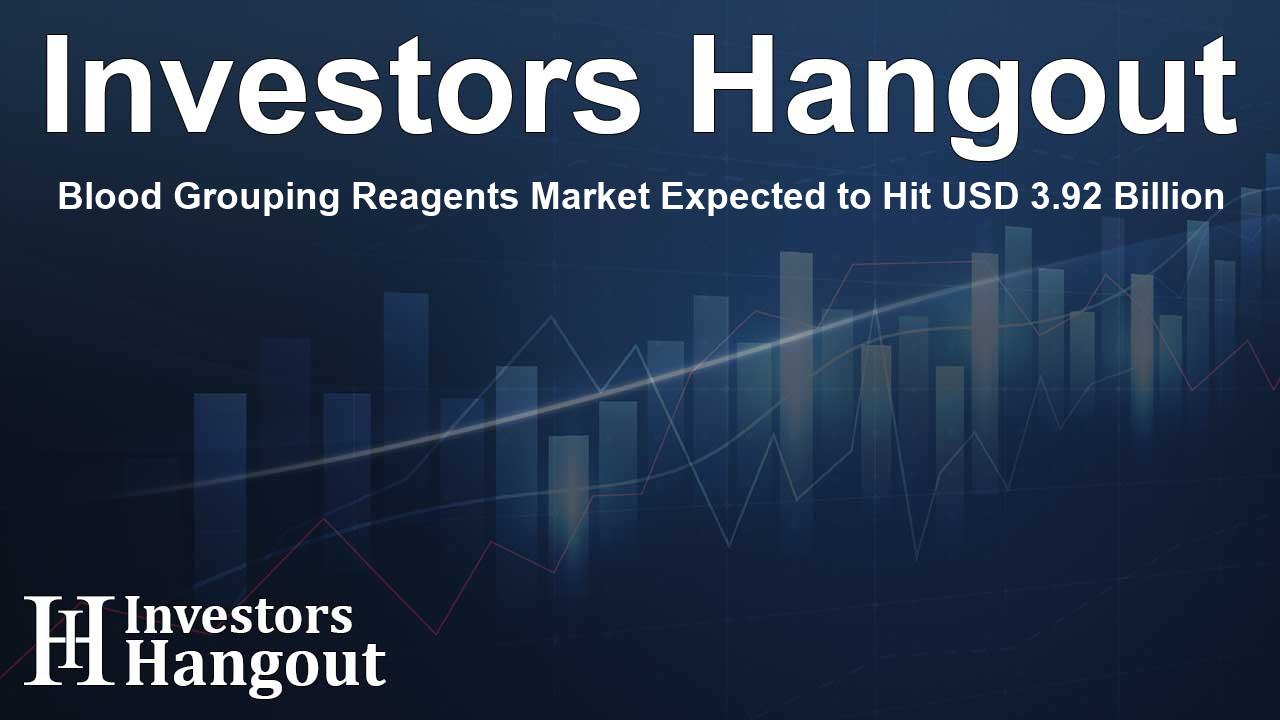Blood Grouping Reagents Market Expected to Hit USD 3.92 Billion

Insight into the Expanding Blood Grouping Reagents Market
The Blood Grouping Reagents Market is experiencing considerable traction, with its size evolving from USD 1.97 billion to an anticipated USD 3.92 billion in the coming years. This remarkable growth signifies a Compound Annual Growth Rate (CAGR) of 7.97% from 2024 to 2032, reflecting the continually rising demand in this specialized sector.
Factors Influencing Market Growth
Several key factors are fostering the substantial growth of the Blood Grouping Reagents Market. A notable increase in chronic diseases such as cancers, anemia, and other conditions necessitating blood transfusions significantly contributes to this trend. Additionally, the frequency of surgical operations and trauma cases requiring compatible blood transfusions has surged, amplifying the need for reliable and efficient blood typing solutions.
Furthermore, advancements in diagnostic technologies and a heightened awareness of blood safety among medical professionals and patients continue to drive market elevation. The development of automated blood typing systems and the integration of cutting-edge molecular techniques enhance diagnosis accuracy, reducing the risks associated with transfusions.
Market Overview and Key Segments
Blood grouping reagents serve a critical role in transfusion medicine, ensuring that blood types are accurately identified to prevent adverse reactions during transfusions. The market can be segmented broadly into consumables, instruments, and service software, with consumables holding the largest share in revenue. This is expected, given their high turnover in facilities such as hospitals and blood banks.
Instruments, including automated blood typing analyzers, are expected to see the fastest growth rate, driven by the shift towards automation to minimize human errors in blood testing.
Regulatory Framework and Compliance
As the market expands, regulatory compliance becomes increasingly important. Stringent regulations around blood safety are mandating the use of high-quality reagents. Following regulatory updates like the EU’s In-Vitro Diagnostic Regulation, companies must ensure their products meet enhanced safety and performance standards.
Emerging Technologies and Trends
The Blood Grouping Reagents Market is seeing a rise in the application of technologies like Polymerase Chain Reaction (PCR) and Massively Parallel Sequencing (MPS). These techniques are revolutionizing blood typing by enabling the precise detection of rare blood group antigens and improving overall testing accuracy. As hospitals and blood labs are advised to adopt these advanced methodologies, the market is poised for further growth.
Notable Players in the Industry
Leading companies contributing to the blood grouping reagents landscape include Merck KGaA, Bio-Rad Laboratories, Beckman Coulter, and Ortho Clinical Diagnostics. These firms are at the forefront of innovation, continuously developing new products that meet the evolving demands of the healthcare sector.
Recent Developments In The Sector
Recent developments in the Blood Grouping Reagents Market indicate a progressive shift towards precision and safety. For instance, a collaboration among researchers has unveiled a novel blood group system, further enhancing the understanding and treatment of rare blood types.
Moreover, a significant investment surge in transfusion-related diagnostics in major healthcare systems highlights the mounting importance of effective blood typing solutions, with substantial funding aimed at enhancing the technologies and reagent quality.
Challenges and Opportunities
While the market demonstrates promising growth potential, it also faces challenges, such as maintaining compliance with evolving regulatory standards and the need for continual innovation in product offerings. However, these challenges present opportunities for companies willing to invest in research and development to spearhead advancements.
Frequently Asked Questions
What is the projected size of the Blood Grouping Reagents Market?
The market is projected to reach USD 3.92 billion by 2032, growing from USD 1.97 billion in 2023.
What factors drive the growth of the Blood Grouping Reagents Market?
The increase in chronic diseases, the frequency of surgeries, and growing automation are critical drivers of market growth.
How are technologies influencing the market?
Emerging techniques like PCR and MPS enhance the precision of blood typing, enabling better safety and efficacy in transfusions.
Who are the major competitors in this market?
Major players include Merck KGaA, Bio-Rad Laboratories, and Ortho Clinical Diagnostics, among others.
What challenges does the Blood Grouping Reagents Market face?
Key challenges include regulatory compliance and the necessity for continuous innovation to meet market demands.
About The Author
Contact Henry Turner privately here. Or send an email with ATTN: Henry Turner as the subject to contact@investorshangout.com.
About Investors Hangout
Investors Hangout is a leading online stock forum for financial discussion and learning, offering a wide range of free tools and resources. It draws in traders of all levels, who exchange market knowledge, investigate trading tactics, and keep an eye on industry developments in real time. Featuring financial articles, stock message boards, quotes, charts, company profiles, and live news updates. Through cooperative learning and a wealth of informational resources, it helps users from novices creating their first portfolios to experts honing their techniques. Join Investors Hangout today: https://investorshangout.com/
The content of this article is based on factual, publicly available information and does not represent legal, financial, or investment advice. Investors Hangout does not offer financial advice, and the author is not a licensed financial advisor. Consult a qualified advisor before making any financial or investment decisions based on this article. This article should not be considered advice to purchase, sell, or hold any securities or other investments. If any of the material provided here is inaccurate, please contact us for corrections.
